Books
Learning Korean can be daunting without the proper resources. This page lists some of the most popular books available to learn Korean or to discover more about Korean culture. Reviews available on KoniKorean are linked when available. Books with a star are recommended by KoniKorean.
Contents
Language Learning
General Purpose
Elementary Korean, Continuing Korean, and Advanced Korean
Elementary Korean, Continuing Korean, and Advanced Korean by Ross King and Jaehoon Yeon – A great series to learn Korean through dialogues, copious vocabulary lists and detailled grammar explanations. The books come with CD audios or MP3 files to download online depending on the edition. Elementary Korean has a separate workbook that can be purchased, with additional exercises. The Advanced Korean book focuses on Chinese characters to prepare the reader for self-learning past the series.
Who is this series for? Self-learners of Korean who want a step-by-step, all-in-one book with dialogues, vocabulary, grammar, and exercises.
Links: Review of Elementary Korean (KoniKorean) , Continuing Korean (KoniKorean) • Buy Elementary Korean (and its workbook ), Continuing Korean, or Advanced Korean on Amazon.
Grammar
Korean: a Comprehensive Grammar
Korean: a Comprehensive Grammar by Jaehoon Yeon and Lucien Brown – A terrific grammar book with most (if not all) grammar patterns that Korean learners — beginner to advanced — will encounter in their studies. A new edition of the book has been recently published (2019) and contains more of the infrequent Korean grammar patterns, making it an all-the-more valuable reference. This book does not have exercises or vocabulary lists (besides peculiar verbs), but can easily be complemented by the Elementary ,Continuing , andAdvanced Korean series , also co-written by Jaehoon Yeon. Highly recommended.
Who is this book for? Learners of all levels who want a grammar that they can refer to regardless of the question they have.
Links: Review (KoniKorean) • Buy Korean: A Comprehensive Grammar on Amazon .
Basic Korean: a Grammar and Workbook
Basic Korean: a Grammar and Workbook by Andrew Sangpil Byon – A great grammar for beginners, with many examples and exercises for step-by-step learning. The book also contains vocabulary lists for each chapter, when most grammar books only contain grammar. The only reason this grammar is not recommended is that the reader may quickly outgrow the grammar points in the book; and, as opposed to Korean: a Comprehensive Grammar , it has little value for intermediate and advanced learners.
Who is Basic Korean: a Grammar and Workbook for? People who know absolutely nothing in Korean and want a book that can serve as a reference for their first year of self-study.
Links: Buy on Amazon .
한자 (Chinese Characters)
Chinese Character Cognates - 808 Common Hanja
Chinese Characters Cognates - 808 Common Hanja by Joon Geem – A reference of the most common Chinese characters, or 한자 (Hanja), encountered in Korean, Chinese, and Japanese. The book offers a Korean table to look up 한자 by their 한글 pronunciation. One to three examples of Korean words are provided for each Chinese character, as well as a few sentences about the etymology of the character.
Who isChinese Characters Cognates - 808 Common Hanja for? Advanced learners of Korean, or learners who already know either Japanese or Korean.
Links: Review (KoniKorean) • Buy on Amazon
Your First Hanja Guide (Talk To Me In Korean)
Your First Hanja Guide co-written by Talk To Me In Korean – a resource for first-timers in the world of 한자. The book introduces the reader to 118 new characters step-by-step, nicely mixing simple and more complex characters in number of strokes to keep the reader's interest. The book has many example words for each character, but few example sentences on average. While the presentation and content is great for intermediate students learning 한자 for the first time, it falls short of being a reference book for advanced learners of Korean.
Who isthis book for? Intermediate learners of Korean who have never learned Chinese characters or only know a few.
Links: Full Review (KoniKorean) • Buy on Amazon
Dictionaries and Lists
A Frequency Dictionary of Korean
A Frequency Dictionary of Korean – A useful dictionary listing 5000 most common words, ordered from most common to least common instead of 한글 order. The word frequencies were calculated from a corpus of texts including novels, newspaper articles, children books, and more. The order is therefore not appropriate for beginners starting in Korean and wanting to speak fast (e.g., many of the initial words are frequent in newspapers but not in conversation), but very valuable for people preparing TOPIK II (한국어능력시험) as they can check for completeness of their vocabulary.
Who is this book for? Advanced learners of Korean studying for TOPIK II or wanting to check their vocabulary. Intermediate learners of Korean who have never learned Chinese characters or only know a few.
Links: Review (KoniKorean) • Buy on Amazon
Thematic Learning
The Routledge Course in Business Korean
The Routledge Course in Business Korean – A great resource for people working in South Korea or preparing to enter the Korean workforce, as well as advanced learners preparing for TOPIK. This book contains a lot of specialized vocabulary ranging from marketing to manufacturing that the reader learns through dialogues and case studies. The Routledge Course in Business Korean also teaches grammar points commonly spoken but rarely mentioned in grammar books, and Chinese characters to help the reader guess the meaning of unknown words.
Who is this book for? Intermediate learners working or preparing to work in South Korea, and advanced learners of Korean studying for TOPIK II or wanting to check their vocabulary.
Links: Review (KoniKorean) • Buy on Amazon
Book Review - Elementary Korean
Elementary Korean by Ross King and Jaehoon Yeon, and Insun Lee is a great textbook for people starting Korean up to upper-beginners. The book is composed of 13 lessons and two review chapters. The first four lessons focus on reading and writing individual characters, and learning how to pronounce Korean words. The remaining lessons consist of one to four dialogues and reading passages on conversational and practical topics, such as introducing oneself, booking a train ticket, or deciding what to eat and ordering at restaurants. Each lesson also introduces vocabulary relevant to the theme of the readings, and corresponding grammar points.
Book Review - Your First Hanja Guide
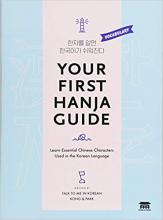
Your First Hanja Guide is a 한자 (hanjja, or Chinese characters used in the Korean language) reference book co-written by the staff at Talk to Me in Korean (TTMIK). This book is one of their few books aimed both at their intermediate and advanced learners of Korean and is meant to be an introduction to common Korean words of Chinese origin used in everyday language.
Review of Chinese Characters Cognates - 808 Common Hanja
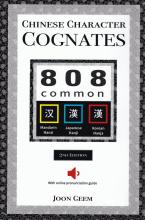
This book by Joon Geem lists the 808 most common 한자 Chinese characters in Mandarin (hanzi), Japanese (kanji), and Korean (한자) in a compelling format. This book is particularly recommended to language learners or both Japanese and Korean or Chinese and Korean. For each of the 808 most common Chinese characters across China, Korean, and Taiwan; the author lists the corresponding simplified Chinese character, the Japanese kanji, and the Korean hanja (한자). The author also provides three vocabulary words using the corresponding Chinese character for each language, allowing comparisons between Chinese and Korean for example.
The Routledge Course in Business Korean
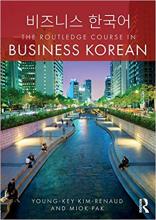
The Routledge Course in Business Korean (비즈니스 한국어) by Young-Key Kim-Renaud and Miok Pak introduces the reader to the necessary vocabulary, grammar, and cultural knowledge to navigate the complex world of doing business in South Korea. The book is structured in 15 units and 3 business cases. Each unit starts with a dialogue about a specific business situation, such as a job interview or a business trip. The dialogue is then followed by a convenient vocabulary list that includes the new words introduced by the dialogue, along with their hanja reading and their English translation (note: romanization is not provided). New grammar patterns used in the dialogue are also discussed; the grammar points in this book are rather advanced and I think most suitable for upper intermediate to advanced learners of Korean. Units end with a reading passage, its associated vocabulary, and exercises to practice the vocabulary and grammar introduced in the unit. The three business cases included consist of longer reading passages with the corresponding vocabulary.
Book Review: Continuing Korean, Second Edition
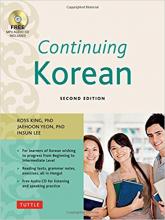
Continuing Korean, Second Edition by Ross King, Jaehoon Yeon, and Insun Lee is a great textbook for upper beginner/lower intermediate learners of the Korean language. The book is composed of 12 lessons that walk readers through one or two dialogues and a reading passage, vocabulary relevant to the readings, and various grammar points.
The good points about this book:
– The progression in difficulty is very gradual, so it is hard to feel lost or overwhelmed if the lessons
are studied in the right order.
– The book comes with an audio CD containing all the spoken dialogues, words and phrases, making the book a
great investment for autodidacts.
– For the most part, the dialogues are relatable, making it easier to understand the context of use of specific
words.
– The grammar points are well redacted and easy to understand.
Book Review - Korean: A Comprehensive Grammar
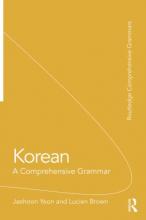
Korean: A Comprehensive Grammar by Jaehoon Yeon and Lucien Brown is one of the most useful, if not the only, comprehensive Korean grammar books available in English. The book starts with a very complete refresher on honorifics and the complex pronunciation rules of the Korean language. The rest of the book has one chapter per class of words in the Korean language. The structure of the book goes as follows:
Book Review: A Frequency Dictionary of Korean
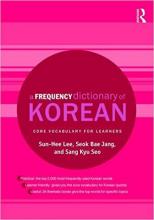
An invaluable resource for Korean learners, Routledge's A Frequency Dictionary of Korean: Core Vocabulary for Learners catalogs the 5,000 most frequent Korean words with their pronunciation and an example sentence for each. This book is very useful for several reasons:
– Thematic vocabulary lists: 24 inserts throughout the book are dedicated to the most frequent words about a
single topic. Useful to quickly memorize conversational words. See the sample page below for an example.
– An alphabetical index at the end of the book helps quickly find any Korean word present in the book.
– Each word is accompanied by a sample sentence. Really useful to understand how the word fits within a
sentence and the grammatical patterns associated with them.






